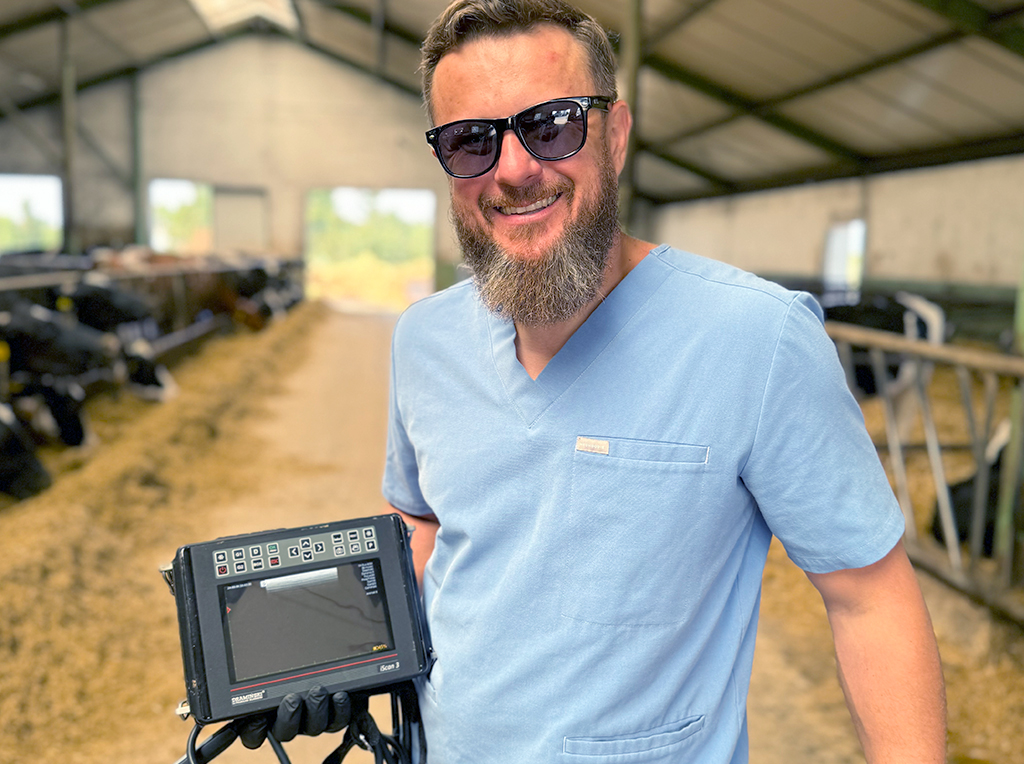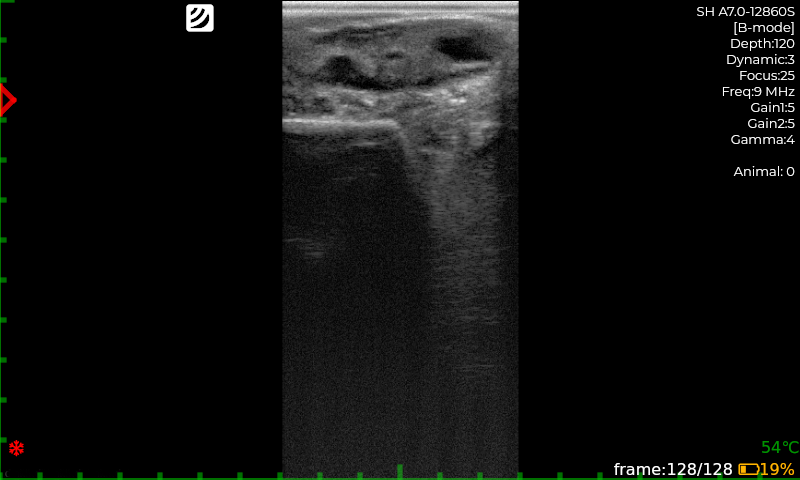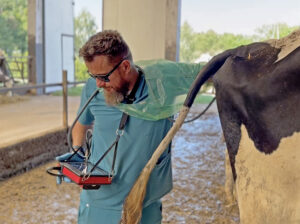Ovarian acyclicity and dysfunction

Ovarian acyclicity is one of the most common reproductive disorders in dairy cows, which consists in complete or partial inhibition of the ovarian activity, including the processes of follicle formation and growth, which are necessary for normal insemination. In high-performance herds, acyclicity should be a sporadic problem. When the number of the affected cows is high, the most likely cause is inadequate nutritional management, especially calorie deficit and vitamin deficiencies as well as micro- and macronutrient deficiencies. Other aetiological factors include systemic diseases, such as infection and inflammation, and stress associated with an intensive production system. Under physiological conditions, ovaries should resume their normal activity about 30 days after calving, but in animals with metabolic disorders the process may be delayed.
The first and most common sign of acyclicity is silent heat. On palpation and ultrasound, the ovaries are small, flaccid, smooth and devoid of functional structures such as the corpus luteum (CL) and follicles (F). Ovarian inactivity translates into the inability to produce adequate amounts of hormones, namely oestrogens and progesterone, which are essential for normal cycle and effective insemination.

Figure 1 Ovarian dysfunction – no structures (diagnostic image taken using iScan 3 ultrasound scanner)
Effect of calorie deficit and vitamin deficiency on ovarian function
Calorie deficit in the diet has a direct impact on the cow’s metabolism, especially during lactation. High milk production increases an energy requirement, and calorie deficit leads to catabolic states, in which the body is unable to maintain normal ovarian function. Insufficient energy supply can lead to delayed or absent oestrus as the fat reserves are utilised for metabolic processes rather than the support of proper function of the reproductive system. In addition, low blood glucose levels can inhibit the production of hormones responsible for follicular development, such as gonadotropins.
Vitamins A and B as well as microelements such as copper, zinc and selenium play a key role in the proper function of the ovaries. Vitamin A is involved in ovarian cell proliferation processes, and its deficiency can lead to the damage to the ovarian tissue and disturbances in the production of sex hormones. Vitamins B6 and B12 and folic acid, on the other hand, are essential for DNA synthesis and red blood cell production, which contributes to the hormonal balance in the cow’s body. Deficiencies in these vitamins can cause cyclicity disorders and inability to maintain normal ovulation.
The role of GnRH and PGF2α in the treatment of acyclicity
GnRH (gonadotropin-releasing hormone) and PGF2α (prostaglandin F2α) are essential in the regulation of the reproductive cycle of cows. GnRH is responsible for stimulating the anterior lobe of the pituitary gland to secrete gonadotropic hormones: LH (luteinising hormone) and FSH (follicle-stimulating hormone). LH is required to trigger ovulation while FSH stimulates follicular development. Therefore, GnRH administration at the right time during the cycle may stimulate ovulation, especially when follicles have reached a minimum size of 10 mm, allowing the release of an endogenous LH surge.
PGF2α, on the other hand, is used for the treatment of ovarian acyclicity because of its luteolytic properties – it causes regression of the corpus luteum (CL), which results in lowered progesterone level and enables initiation of a new ovarian cycle. Effective combination of GnRH and PGF2α can restore normal cycle in cows which had failed to respond to standard treatment modalities.
Gestagen-containing intravaginal inserts are an effective treatment option. It consists in induction of a rapid drop in progesterone followed by the use of PGF2α and GnRH analogues, which enables initiation of a new ovarian cycle. As adjunct treatment, mineral-vitamin boluses and beta-carotene preparations are administered to correct possible deficiencies. A treatment effect can also be achieved with the administration of GnRH, provided that the follicles have reached a minimum size of 10 mm, which enables an endogenous LH surge. In refractory cases, more advanced methods are used, such as epidural (i.e. into the space above the spinal dura mater) administration of a GnRH analogue or intravenous injection of hCG (human chorionic-gonadotropin).
The role of prophylaxis and diagnostics
If acyclicity is frequently diagnosed in the herd, it is essential to identify and eliminate its causes. In such situations, as in many other, pharmacological or hormonal treatment of multiple animals may prove uneconomical. It is often possible to avoid medical interventions by taking appropriate preventive measures. Regular diagnostic evaluation, including ovarian ultrasound scanning, nutritional status monitoring and stress control are essential to prevent acyclicity. Proper dietary management, tailored to the energy requirements of animals in various lactation stages, is fundamental to maintain the optimal reproductive function of cows.

DVM, Michał Barczykowski



